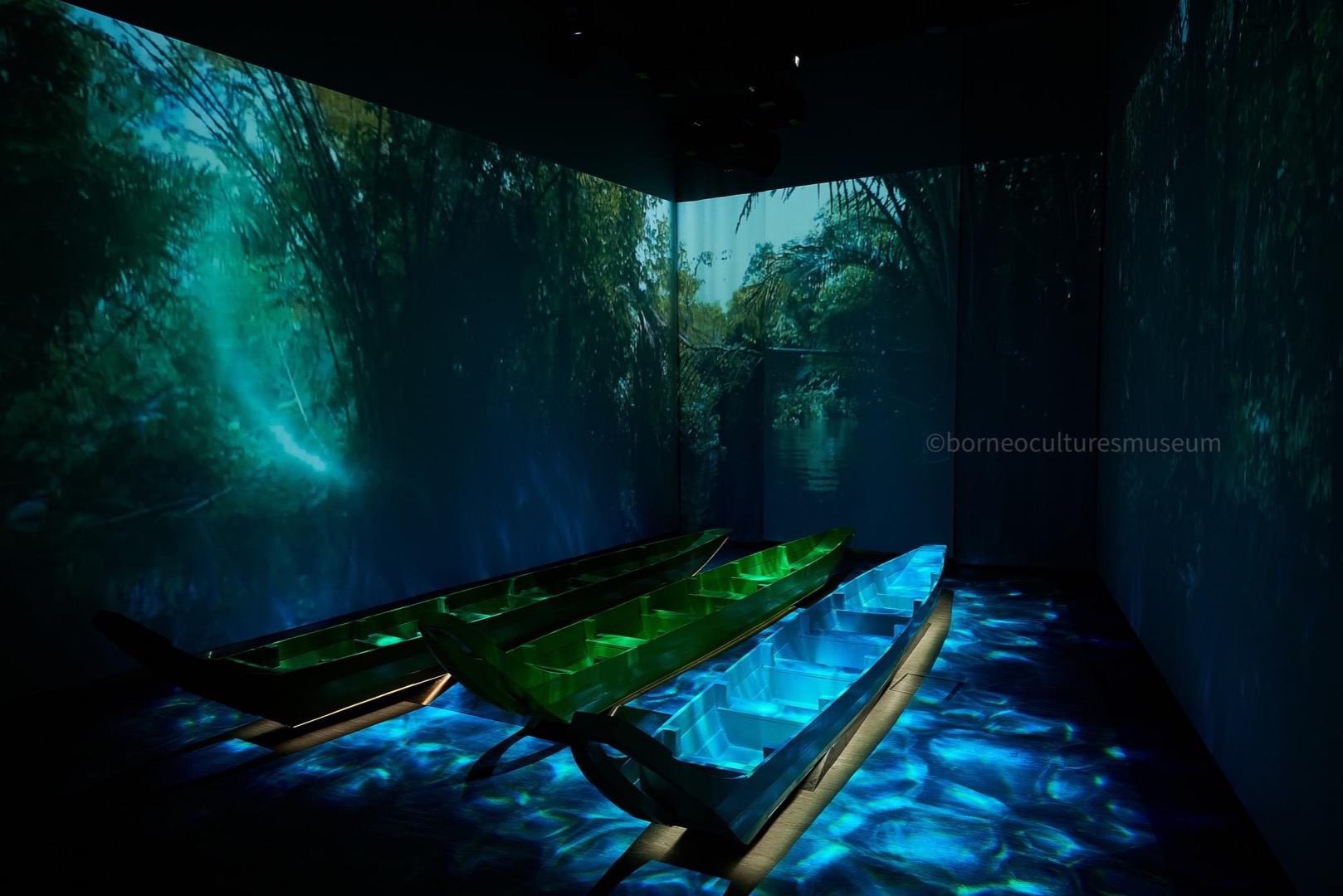Unveiling the Treasures of Borneo Cultures Museum
Wiki Article
Explore the Fascinating Globe of Borneo's Cultural Heritage: A Comprehensive Guide to the Cultures Gallery Experience
Immersing oneself in the elaborate tapestry of Borneo's cultural heritage belongs to embarking on a voyage through time and tradition. The combination of native people, traditional inventions, exciting efficiencies, and historical narratives housed within the confines of the island's galleries provides a glance right into a globe including extensive heritages and vibrant customs. As visitors traverse with these repositories of culture, they are bid to discover a realm where past and existing intermingle, inviting contemplation on the resilience and richness of Borneo's varied heritage.Aboriginal Tribes of Borneo
Borneo is home to over 50 native people, each with distinct cultural techniques and traditions that have been maintained for generations. Among these people are the Iban, known for their elaborate tattoos and typical longhouses where several households stay. The Dayak people, another popular team, engage in sophisticated spiritual events and are competent artisans, crafting complex timber makings and woven textiles. The Penan people, on the other hand, are nomadic hunter-gatherers with a deep link to the jungle, utilizing blowpipes for hunting and celebration wild plants for nutrition.These indigenous people play a crucial function in keeping Borneo's rich social tapestry. Site visitors to Borneo have the possibility to engage themselves in the special way of livings of these people via cultural excursions, homestays, and community-based tourist initiatives.
Standard Inventions and Artifacts

One popular example of standard inventions in Borneo is the manufacturing of woven products - Borneo Cultures Museum. Proficient weavers make use of all-natural fibers like rattan, bamboo, and pandan leaves to create intricate baskets, mats, and accessories adorned with colorful patterns that hold symbolic significances within the neighborhood
The art of woodcarving is another considerable element of Borneo's typical inventions. Artisans carve intricate layouts right into various sorts of wood to produce masks, sculptures, and music instruments that not only offer functional functions yet also hold social significance, commonly illustrating mythology or spiritual ideas.
Moreover, Borneo is renowned for its beadwork, with craftsmens diligently crafting beads from products like glass, seeds, and shells to create jewelry, clothing decorations, and ornamental items that showcase the area's vibrant aesthetic practices. These standard inventions and artefacts not just act as concrete expressions of Borneo's social heritage however likewise offer understandings right into the neighborhoods' ideas, worths, and way of living.

Social Performances and Festivals
With an ingrained link to their social practices, the neighborhoods in Borneo come to life with vivid social efficiencies and events that celebrate their heritage. These occasions showcase the rich variety of Borneo's ethnic groups, each offering distinct dancings, music, and rituals that have actually been given with generations. Among the most prominent celebrations is the Gawai Dayak, commemorated by the Dayak individuals to mark the rice harvesting period. During this celebration, standard music loads the air, complex dances are carried out, and elaborate conventional costumes are put on. Another considerable occasion is the Pesta Kaamatan, commemorated by the Kadazandusun community to offer thanks for the rice harvest. This event includes social efficiencies, consisting of the Sumazau dancing, and standard sports like the bamboo dancing. Visitors to Borneo can immerse themselves in these celebrations, gaining a deeper understanding of the region's social heritage and experiencing the cozy hospitality of its people. Cultural efficiencies and events act as a lively reminder of Borneo's rich cultural tapestry and the value of preserving these practices for future generations.Historic Narratives and Artefacts
Exploring the historic stories and artifacts of Borneo supplies a remarkable glimpse into the area's abundant past and cultural advancement. Borneo's historical tapestry is woven with diverse influences, showing the communications in between aboriginal people, Chinese investors, European colonizers, and Malay sultanates. The artifacts discovered in Borneo display this elaborate background, ranging from standard crafts like complex beadwork and woodcarvings to archaeological treasures such as old pottery and tools.Among one of the most compelling facets of Borneo's historical stories is the preservation of oral practices passed down with generations. These tales provide insights into the beliefs, custom-mades, and day-to-days live of Borneo's residents throughout the centuries. Furthermore, the artefacts uncovered from historical sites provide concrete connections to these narratives, enabling visitors to witness the material culture of past cultures firsthand.
Contemporary Cultural Preservation Efforts

In addition, educational programs and social exchange activities play a crucial duty in elevating recognition regarding the relevance of protecting Borneo's unique social heritage. By involving colleges, museums, and the wider area in discussions and activities that commemorate Borneo's diverse societies, Borneo Cultures Museum conservation initiatives can acquire energy and support for long-term sustainability. Cooperations between governmental bodies, charitable organizations, and neighborhood neighborhoods are essential in driving these preservation endeavors onward, guaranteeing that Borneo's abundant cultural heritage continues to be dynamic and valued for generations to come.
Verdict
Finally, the social heritage of Borneo is rich and varied, with native people, standard inventions, cultural performances, events, historical stories, and modern conservation efforts all adding to its uniqueness and value. Site visitors to Borneo's cultural museums can obtain a deeper understanding and gratitude of the area's social heritage, permitting a much more immersive and informing experience.Immersing oneself in the complex tapestry of Borneo's social heritage is comparable to embarking on a voyage with time and custom.With an ingrained link to their cultural customs, the neighborhoods in Borneo come active through dynamic cultural efficiencies and events that commemorate their heritage. Social performances and festivals serve as a lively suggestion of Borneo's abundant social tapestry and the importance of protecting these customs for future generations.
Additionally, instructional programs and social exchange tasks play an essential function in increasing understanding regarding the value of preserving Borneo's special social heritage. Partnerships between governmental bodies, non-profit companies, and neighborhood areas are essential in driving these conservation endeavors forward, guaranteeing that Borneo's rich cultural heritage remains vibrant and valued for generations to come.
Report this wiki page